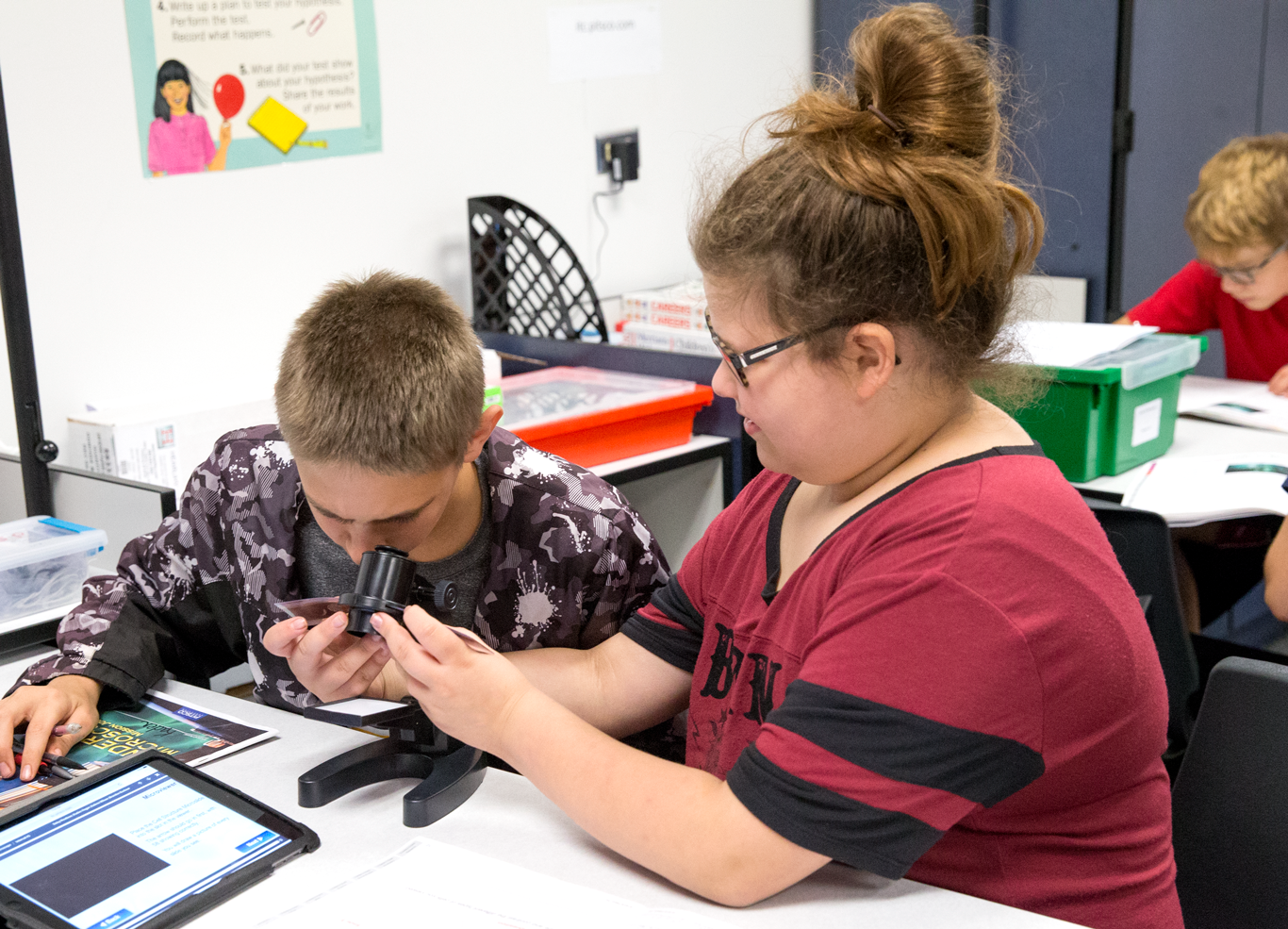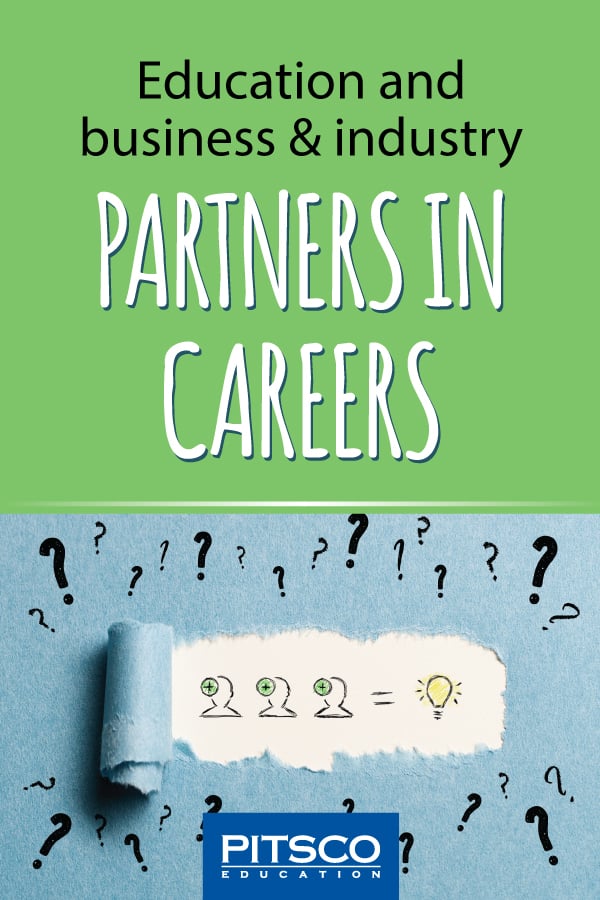Updated 6/6/24
When it comes to education and business, we often think of them as two separate entities. While education, especially higher education, presumably leads to a career, there isn’t always a clear connection between what we learn in school and the skills we end up using on the job.
“Employers don’t speak the same language as educators,” said Mary Paramore, a profiler for ACT® WorkKeys®, “and most teachers haven’t worked in . . . local businesses and industries.”
“We can’t speak educationese,” agreed Mark Meno, research and engineering group head at FRC East (North Carolina). “So, a lot of times we end up with this weird alignment issue that misses the mark slightly, and 10 years later we look at the output and we’re like, ‘Uh oh, that went wrong.’”
Translating Between Educationese and Workforce Needs
School districts, local businesses, and industries have started coming to the same conclusion – they need each other. Schools realize they need the input of business and industry leaders if they’re going to properly prepare their students for the workforce. And business leaders recognize the need to create a pipeline of skilled, capable workers. Working together is a win-win-win for schools, businesses, and, most importantly, students.
 But to work together, educators and business leaders need to speak the same language – or at least be fluent in both languages. One area of the country where this communication gap has been effectively closed is in eastern North Carolina, where in 2009, the STEM East initiative first emerged with a goal to align education with local workforce needs.
But to work together, educators and business leaders need to speak the same language – or at least be fluent in both languages. One area of the country where this communication gap has been effectively closed is in eastern North Carolina, where in 2009, the STEM East initiative first emerged with a goal to align education with local workforce needs.
As part of that process, Paramore was brought in to profile Pitsco Education’s STEM Modules (now Expeditions®), which were being used in STEM Centers across the region. One of Paramore’s first steps was to close the communication gap between what the workforce was saying they needed and what schools were hearing they needed to teach.
“One of the most blatant examples,” said Paramore, “is an industry might say, ‘People have to be good at math in this job, and they’re graduating students not good at math.’” Consequently, teachers would implement more math. “But when we do the profile for that specific job,” said Paramore, “I find what employees are doing is comparing information and trends shown in one or two straightforward graphics.” After the communication gap was fixed, a common language began to spread among teachers and employers.
Once education and business leaders begin talking, the next important step is to keep that conversation going. It’s imperative to bring everyone to the table on a regular basis to discuss both current and future workforce and educational needs. In the STEM East region, that meant forming the Eastern North Carolina Employers and Superintendents Council, which includes superintendents from the 11 school districts in the region and 11 business and industry leaders who rely on the schools to provide them with a well-prepared workforce.
“We want a workforce that can take us to the next level,” said Duke Energy Government and Community Relations Manager Millie Chalk. “How do we grow our economy to do more and be more? That really comes from a grassroots effort in education.”
Small District, Big Experiences
In small-town Fredonia, Kansas, educators strive to give their students real-world, hands-on experiences. “We want our kids to have experiences. Over and over again, experiences,” said Junior/Senior High School Principal Jamie Camacho.
And those experiences begin in seventh and eighth grade with Pitsco STEM Expeditions, which enable students to explore various career connections through hands-on projects and problem-solving. “Pitsco poses students with a problem, if you will,” explained Camacho, “and they are set free to find a solution.” In addition to the career explorations, the problem-solving feature inherent in Expeditions preps students for working in the real world. “We’ll need them to go out there, excited about solving the problems we don’t even know exist today,” said Camacho.
 STEM Expeditions also prepare students for the types of career experiences they might encounter in high school. In Expeditions, students might learn about composite materials or the human anatomy and what careers go along with those skills. In high school, they get real-world experiences in these industries, such as the student who was placed with a local metal fabrication company and was learning how to weld by day two. Or the student interested in nursing who was allowed to draw blood from a patient during part of the Fredonia Medical Academy summer program.
STEM Expeditions also prepare students for the types of career experiences they might encounter in high school. In Expeditions, students might learn about composite materials or the human anatomy and what careers go along with those skills. In high school, they get real-world experiences in these industries, such as the student who was placed with a local metal fabrication company and was learning how to weld by day two. Or the student interested in nursing who was allowed to draw blood from a patient during part of the Fredonia Medical Academy summer program.
By partnering with area businesses and industries, the Fredonia School District is giving their students a well-paved path to career exploration.
Creating an Alliance, Encouraging Careers
Likewise, the KC STEM Alliance in Kansas City, Missouri, has created a STEM learning ecosystem, involving educators, businesses, and organizations, all working with one goal in mind: to inspire and encourage students to pursue careers in science, technology, engineering, and math to create and sustain a viable STEM workforce.
To that end, Alliance team members, hailing from schools, out-of-school programs, museums, community-based groups, businesses, and government leadership, work to share information across the board so that their curriculum, business, and community needs all align. The KC STEM Alliance encourages the support of and from the community. Area businesses can connect with local schools through a variety of ways, including sponsorships, mentoring programs, and program partnerships. In this way, they not only help create excitement around STEM careers among students but also secure a pipeline of workers trained in 21st-century skills necessary to be successful in the workplace of tomorrow.
Oklahoma: Connecting Education, Aviation, and STEM Careers
Oklahoma school and business districts have also felt the call to work together. Since 2007, when the Oklahoma Education and Industry Partnership (OEIP) first began with an invitation to teachers to attend a special event at the annual aerospace summit, educators and business leaders have worked hard to connect curriculum to careers.
Part of that connection expanded when, in 2010, Pitsco became a partner and offered teachers OEIP grants. “Now there’s probably 600 teachers across the state of Oklahoma that have classrooms full of Pitsco [STEM] stuff as a result of our partnership,” said Retired Brigadier General and OEIP Director Ben Robinson.

Since its inception in 2007, OEIP has expanded to include energy, agriculture, manufacturing, logistics, and other industries, expanding the option for students and keeping the Oklahoma workforce pipeline filled with a steady stream of qualified candidates.
Additionally, the MidAmerica Industrial Park in Pryor Creek, Oklahoma, has connected schools, communities, and industries with the goal of increasing employment, bringing in new business while simultaneously helping grow existing businesses, and creating a variety of career opportunities within the area.
By all accounts, their efforts have been successful. In 2016, Google opened a four-story facility within the industrial park, becoming one of several businesses committed to creating a thriving workforce.
A Promising Future
It’s easy to see why so many communities are linking business and education. When industry leaders and educators work together – and have the support of the surrounding community – everyone wins. Businesses have a say in the curriculum that will help mold their future employees as well as a secure pipeline of workers; school districts have support, both physically and financially, when it comes to educating their students; and students receive a strong STEM education that leads to fulfilling careers.
MORE RESOURCES:
- Pitsco PBL Units
- Dave Ross: Reflections on shaping – and now teaching – project-based learning
- More than just a theory


